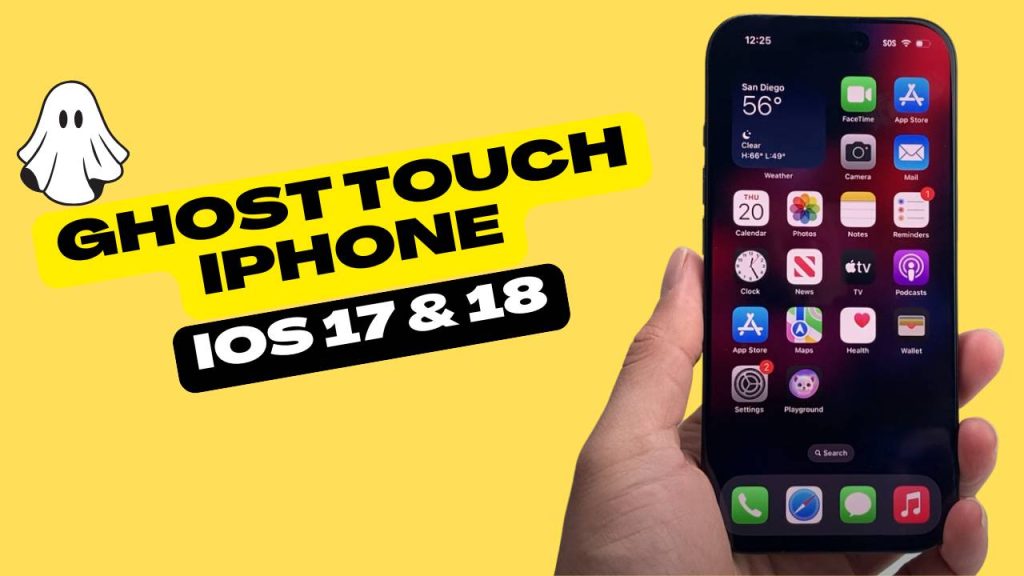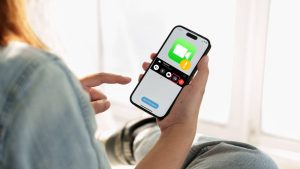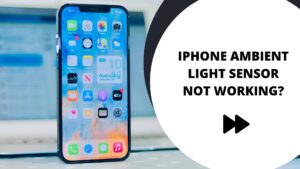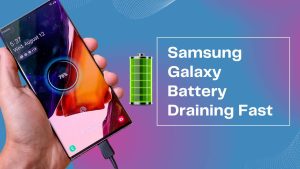In the context of ghost touch iPhone iOS 17 & 18, it’s more than just a minor bug—it can interfere with your work, disable accessibility features, and make you lose control of your device entirely. While it might initially appear to be just a touchscreen issue, ghost touch can stem from both software glitches and hardware malfunctions. If facing these symptoms, it’s essential to begin immediate iPhone troubleshooting to identify the root cause and apply the right fix before the problem worsens.
How to Fix Ghost Touch on iPhone: 7 Easy Solutions That Work
If your iPhone is suddenly acting on its own—apps opening randomly, text typing without your input, or screens swiping uncontrollably—you’re likely dealing with the infamous ghost touch issue. This glitch is frustrating and can make your device nearly unusable. With recent updates to iOS 17 and iOS 18, users are reporting an increase in such problems across multiple iPhone models. As someone who’s personally experienced and tested several solutions, I’ve compiled this detailed guide to help you fix ghost touch iPhone iOS 17 & 18 quickly and effectively.
iPhone Models Affected by Ghost Touch
Ghost touch can affect nearly any iPhone model, but certain models have been more commonly reported by users, especially after major software rollouts like iOS 17 and iOS 18. Based on consistent user feedback, device forums, and my own professional analysis, here are the iPhone models most frequently impacted:
1. iPhone X
The iPhone X is notorious for ghost touch issues due to a known digitizer flaw in its early production batches. Apple even launched a service program in the past to address this problem. Users have reported phantom touches, erratic scrolling, and inputs triggering without any physical contact. In many cases, these issues worsen after updating to iOS 17 or iOS 18, where increased touch sensitivity settings can conflict with aging hardware.
2. iPhone XR / XS / XS Max
These models, while built more robustly than the iPhone X, have seen a surge in ghost touch complaints post-iOS 17 updates. Especially for users who’ve replaced screens with non-genuine or third-party components, the ghost touch behavior seems to be triggered after the software adjusts to new hardware calibrations. The issue ranges from slight misalignment in touch response to rapid flickering and automatic app launches.
3. iPhone 11 Series
iPhone 11, 11 Pro, and 11 Pro Max users have experienced ghost touch symptoms particularly after screen or digitizer replacements. Apple’s strict integration between hardware and software often causes issues when the repair isn’t done at an authorized service center. With ghost touch iPhone iOS 17 & 18 scenarios becoming more common, the iPhone 11 series has shown intermittent touch anomalies—like apps opening by themselves or the screen becoming unresponsive at random.
4. iPhone 12, 13, and iPhone 14 Series
Surprisingly, even the newer models are not completely immune. While these devices feature improved display technology, the ghost touch problem has been linked to post-update bugs in iOS 17 and iOS 18. Some users have noticed screen jittering, input lag, or the phone registering taps without interaction, particularly during heavy multitasking or in humid conditions. These issues often appear after installing system updates, hinting at a software-hardware compatibility glitch.
Fix Ghost Touch Problem on iPhone Without Replacing the Screen
5. iPhone SE (2nd & 3rd Generation)
Although rare, budget-friendly models like the iPhone SE 2020 and SE 2022 have had ghost touch incidents, especially in units with third-party screen replacements or accessories. Due to cost-saving design elements, the SE series may lack the adaptive touch responsiveness seen in flagship models. With ghost touch iPhone iOS 17 & 18 cases reported even on these entry-level devices, it’s clear that environmental interference or poor accessory quality can be a major contributor.
Common Causes of Ghost Touch in iOS 17 & 18
Understanding why ghost touch occurs on iPhone models running iOS 17 & 18 is the first step in identifying the right fix. Based on technical findings and user reports, the following are the most frequent causes behind the ghost touch issue:
1. iOS Software Bugs or Incompatibility
Every major iOS release brings significant changes in system code, touch calibration, and sensor behavior. With iOS 17 and iOS 18, users have reported an increase in ghost touch problems shortly after installing the updates. These bugs often stem from minor glitches in the way the iOS interface processes touch signals, leading to phantom taps, scrolling, or swipe gestures.
For older devices such as the iPhone X, XR, or iPhone 11, new system demands may push the hardware beyond its intended limits. Also, betas and early versions of updates are notorious for touch-related bugs. Apple typically patches these in later updates, but early adopters of iOS 17 & 18 are the ones who face the most instability.
If you restored your phone from a backup or used an OTA (over-the-air) update rather than a clean install, minor corruption in the system files could also contribute to ghost touch iPhone iOS 17 & 18 behavior.
2. Third-Party Screen Protectors and Cases
Not all screen protectors or phone cases are designed with precision. Some budget or poorly aligned screen protectors, especially tempered glass with thick bezels, can interfere with the screen’s capacitive touch accuracy. They may leave tiny air gaps or apply uneven pressure, tricking the digitizer into detecting touch inputs even when you haven’t touched the screen.
Magnetic wallet cases, rugged cases with tight frames, or cases that overlap the edges of the screen can further worsen the issue. In many cases, removing the protector or switching to a certified, slim-profile case instantly resolves the ghost touch. It’s a subtle yet common cause of ghost touch iPhone iOS 17 & 18 that users often overlook.
3. Screen Contamination: Dirt, Dust, or Moisture
Your iPhone’s touchscreen is extremely sensitive to environmental interference. Tiny particles of dirt, oil, sweat, or even water vapor can alter the conductivity of the screen’s surface. This is especially relevant if you’re using your device in kitchens, gyms, bathrooms, or outdoors in high humidity.
Moisture trapped near the screen edges or seeping through small cracks can cause the digitizer to misread signals. In some cases, even residue from cleaning solutions or lotions on your fingers can affect the screen. For users experiencing ghost touch iPhone iOS 17 & 18, cleaning the screen thoroughly and drying it with a microfiber cloth often helps reduce or eliminate phantom touches.
4. Hardware Damage or Manufacturing Defects
Physical damage or internal display defects are leading causes of ghost touch—especially in devices that have been dropped, bent, or serviced by non-certified repair shops. The iPhone X series, in particular, was known for digitizer defects that caused erratic touch behavior.
If the display connector or screen flex cable becomes loose or misaligned, even slightly, it can disrupt the touch signal. Additionally, repairs done without proper grounding or calibration can cause permanent touch sensitivity issues. In such cases, ghost touches may appear randomly, worsen over time, or intensify when applying light pressure on the screen.
Consistently experiencing ghost touch iPhone iOS 17 & 18 even after software resets, the issue may very well lie in the hardware and could require professional diagnostics at an Apple Authorized Service Provider.
5. Using Non-Certified Charging Accessories
This is one of the most overlooked causes of ghost touch during device use while charging. Non-certified or low-quality chargers and cables can introduce electrical noise or grounding issues, disrupting the iPhone’s touch controller. As a result, ghost touches often begin to occur the moment the device is plugged into power.
Voltage fluctuations from cheap power adapters or external battery packs can also mess with the screen’s responsiveness. In many cases, switching to an Apple-certified charger (MFi-certified) resolves the issue immediately. If you’ve noticed that ghost touch only happens when your phone is charging, this is a strong indicator that your accessories are to blame.
This issue is particularly relevant for ghost touch iPhone iOS 17 & 18 cases, as newer versions of iOS tend to be more sensitive to accessory compatibility and power management protocols.
Solutions to Fix Ghost Touch iPhone iOS 17 & 18
Dealing with ghost touch iPhone iOS 17 & 18 issues can be frustrating, but many users have successfully resolved the problem with the right combination of software and hardware troubleshooting. Below are step-by-step solutions, ranging from basic to advanced, designed to eliminate ghost inputs and restore your iPhone’s touch accuracy.
1. Restart Your iPhone – Clear Temporary Glitches
A simple restart can be surprisingly effective. Ghost touch is often triggered by temporary software glitches or background services that have frozen or crashed after an iOS update.
- To restart, press and hold the Power + Volume Up (or Down) buttons until the slider appears.
- Slide to power off, wait 10–15 seconds, and then power back on.
This clears your RAM, refreshes all touch-related background processes, and resolves minor issues affecting touch sensitivity. Especially after upgrading to iOS 17 or iOS 18, a quick reboot should be the first step before attempting more complex fixes.
2. Thoroughly Clean Your Screen
Capacitive screens respond to the electrical signals from your fingers—and any form of dirt, dust, or moisture can interfere with that connection. Oils from skin, cooking grease, sweat, or debris can create false signals that the digitizer interprets as touch inputs.
- Use a clean, lint-free microfiber cloth to wipe the screen gently.
- For deeper cleaning, lightly dampen the cloth with 70% isopropyl alcohol and carefully clean the corners and edges.
- Dry the screen fully before use.
This is one of the most underrated solutions for resolving ghost touch iPhone iOS 17 & 18 issues—especially if you regularly use your phone in environments like the kitchen, gym, or outdoors.
3. Remove Screen Protector and Case
An ill-fitting screen protector or bulky phone case may press unevenly on the screen edges, causing phantom touches—especially when combined with the new touch calibration in iOS 17 and iOS 18.
- Carefully remove the screen protector, particularly if it’s cracked or has bubbles trapped underneath.
- Remove any magnetic or rugged cases that might apply pressure near the screen.
- Clean any residue left by adhesives or dust trapped between the screen and protector.
After removal, test the device without any accessories. If the ghost touch disappears, switch to Apple-certified or ultra-thin accessories that don’t interfere with the screen’s edges or digitizer sensitivity.
4. Install the Latest iOS Update
If your iPhone started showing ghost touch behavior after updating to iOS 17 or 18, the issue may be software-related. Apple often releases point updates (e.g., 17.2.1, 18.0.1) that include patches for bugs affecting screen responsiveness.
- Go to Settings > General > Software Update.
- Download and install the latest available version.
Before updating, ensure your battery is above 50% or connect it to a charger. Also, back up your data to iCloud or your computer to prevent loss. Often, users find that ghost touch issues vanish immediately after applying the latest patch, making this a critical fix for ghost touch iPhone iOS 17 & 18 cases.
5. Reset All Settings
Sometimes, your current system settings—especially those under Display & Brightness, Accessibility, or Touch Accommodations—might conflict with the updated firmware, leading to ghost inputs.
- Navigate to Settings > General > Transfer or Reset iPhone > Reset > Reset All Settings.
- Enter your passcode and confirm.
This does not delete your photos, contacts, or apps, but it will reset all system settings like Wi-Fi, Bluetooth, wallpapers, Face ID, keyboard preferences, and display calibrations. After the reset, monitor the device for a few hours to see if ghost touch persists. This often fixes iOS-based configuration errors without erasing data.
6. Factory Reset (After Backup)
If you’ve tried everything above and the ghost touch still exists, a complete erase may be required. This step removes all data and restores your iPhone to factory condition—eliminating bugs, corrupted files, or app conflicts that may be causing touch issues.
- Backup your data to iCloud or iTunes/Finder.
- Go to Settings > General > Transfer or Reset iPhone > Erase All Content and Settings.
- Follow the prompts and allow the device to reset.
Once done, choose to set up your iPhone as new, without restoring the backup right away. Use the phone for a few hours to test for ghost touch behavior. If the issue is gone, then the bug was likely within your previous settings or apps. You can then selectively restore your backup or reinstall essential apps manually.
7. Use DFU Mode Restore (Deep System Restore)
DFU (Device Firmware Update) Mode is the most advanced software reset Apple offers. It completely erases and reinstalls both the iOS operating system and the device firmware—essentially giving your iPhone a “fresh start.”
Steps to enter DFU mode (may vary slightly by model):
1. Connect iPhone to your computer using a certified Lightning cable.
2. Open iTunes (on Windows or macOS Mojave) or Finder (macOS Catalina or later).
3. Follow the correct button combination:
- For iPhone 8 and newer: Press Volume Up > Volume Down > hold Power until screen goes black. Then hold Power + Volume Down for 5 seconds, then release Power while holding Volume Down for another 5–10 seconds.
4. The screen should remain black, and your computer will detect the iPhone in recovery mode.
5. Click Restore to reinstall the OS and firmware.
After completing the DFU restore, test the device before restoring your backup. If ghost touch issues have stopped, the root cause was likely deep software corruption or firmware-level glitches tied to ghost touch iPhone iOS 17 & 18 problems.
Always start with the simplest fix and escalate to advanced methods if the issue persists. Apple’s newer updates (especially after .1 or .2 versions) often address touch issues reported by users. And if your device is under warranty or part of a known program, don’t hesitate to seek official support.
With the right troubleshooting steps, your iPhone can go back to working as smoothly as ever—even on the latest iOS 17 and iOS 18.
FAQs
1. What is ghost touch on iPhone?
Ghost touch occurs when your iPhone screen reacts on its own—registering taps, swipes, or commands without you actually touching it. It can make the device open apps, type random text, or become unresponsive to real touches. This issue is commonly linked to screen problems, software bugs, or iOS updates.
2. Why is ghost touch happening after updating to iOS 17 or iOS 18?
Ghost touch after an iOS update may result from software glitches, compatibility issues, or corrupted system files. Some updates change how the touchscreen interacts with the device’s firmware, which can lead to unexpected screen behavior—especially on older models
3. Which iPhone models are most affected by ghost touch on iOS 17 & 18?
Ghost touch has been frequently reported on models like iPhone X, XR, XS, 11, 12, and even some iPhone 13 and 14 units after updating to iOS 17 or iOS 18. Older iPhones and those with third-party screen replacements tend to be more vulnerable.
4. Can a screen protector or case cause ghost touch?
Yes. Improperly installed screen protectors or tight-fitting cases can press against the screen or interfere with the capacitive touch layer, causing false touches. Removing these accessories can often resolve or reduce the issue.
5. How do I fix ghost touch on my iPhone running iOS 17 or iOS 18?
Start with basic steps like:
- Restarting your iPhone
- Cleaning the screen
- Removing the screen protector/case
- Updating to the latest iOS version
If the problem persists, try resetting all settings, performing a factory reset, or restoring your iPhone in DFU mode. If none of these work, seek Apple Support for a hardware check.
6. Does Apple offer free repair for ghost touch issues?
Yes, in some cases. Apple had a free screen replacement program for iPhone X due to widespread ghost touch complaints. For other models, repairs may be covered under warranty or AppleCare+. You should check your warranty status and contact Apple Support.
7. Will updating to the latest iOS version stop ghost touch?
Often, yes. Apple regularly releases updates that fix bugs reported by users. If you are experiencing ghost touch on iOS 17 or iOS 18, updating to the latest point release (like iOS 18.1 or 17.4.1) may resolve the issue.
8. Can I use AssistiveTouch to manage ghost touch temporarily?
Yes. Turning on AssistiveTouch provides on-screen navigation that can help you use your device even if the screen is acting erratically. Go to Settings > Accessibility > Touch > AssistiveTouch to enable it.
9. Is ghost touch a hardware or software issue?
It can be either. In many cases on iOS 17 & 18, ghost touch is software-related and can be fixed by restarting or updating. If it continues after resets and restores, it could be due to faulty display hardware, damaged connectors, or digitizer issues.
10. Can third-party repairs or parts cause ghost touch problems?
Yes. Third-party screen replacements may use non-genuine parts, which can affect touch sensitivity and lead to ghost inputs. Always use Apple-authorized service providers or ensure high-quality OEM parts if repairs are needed.






